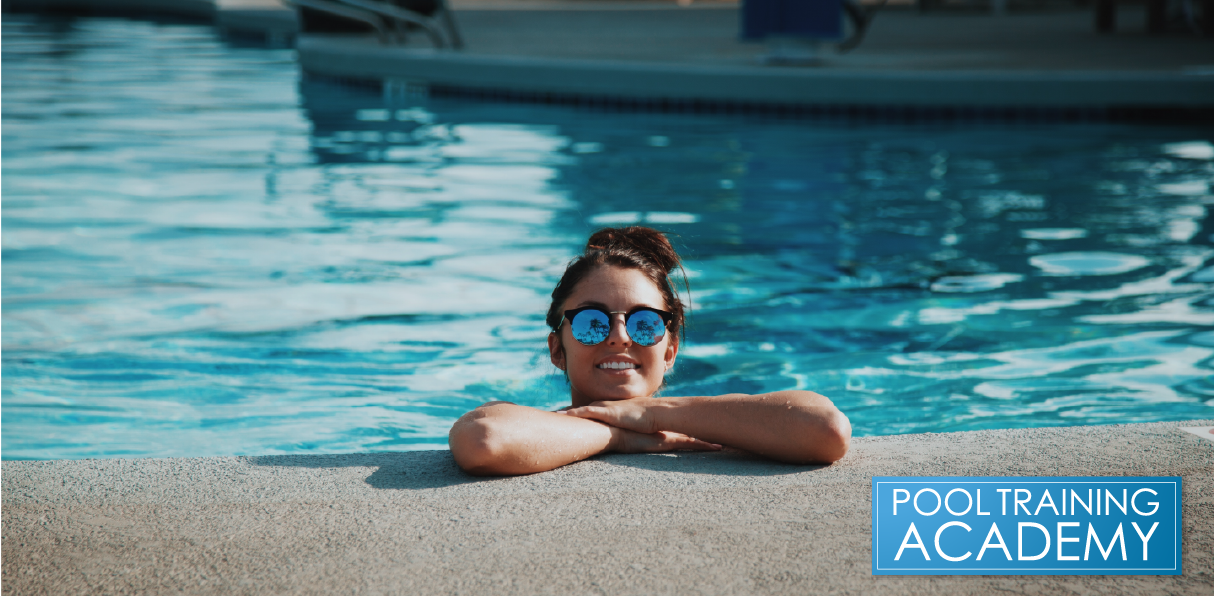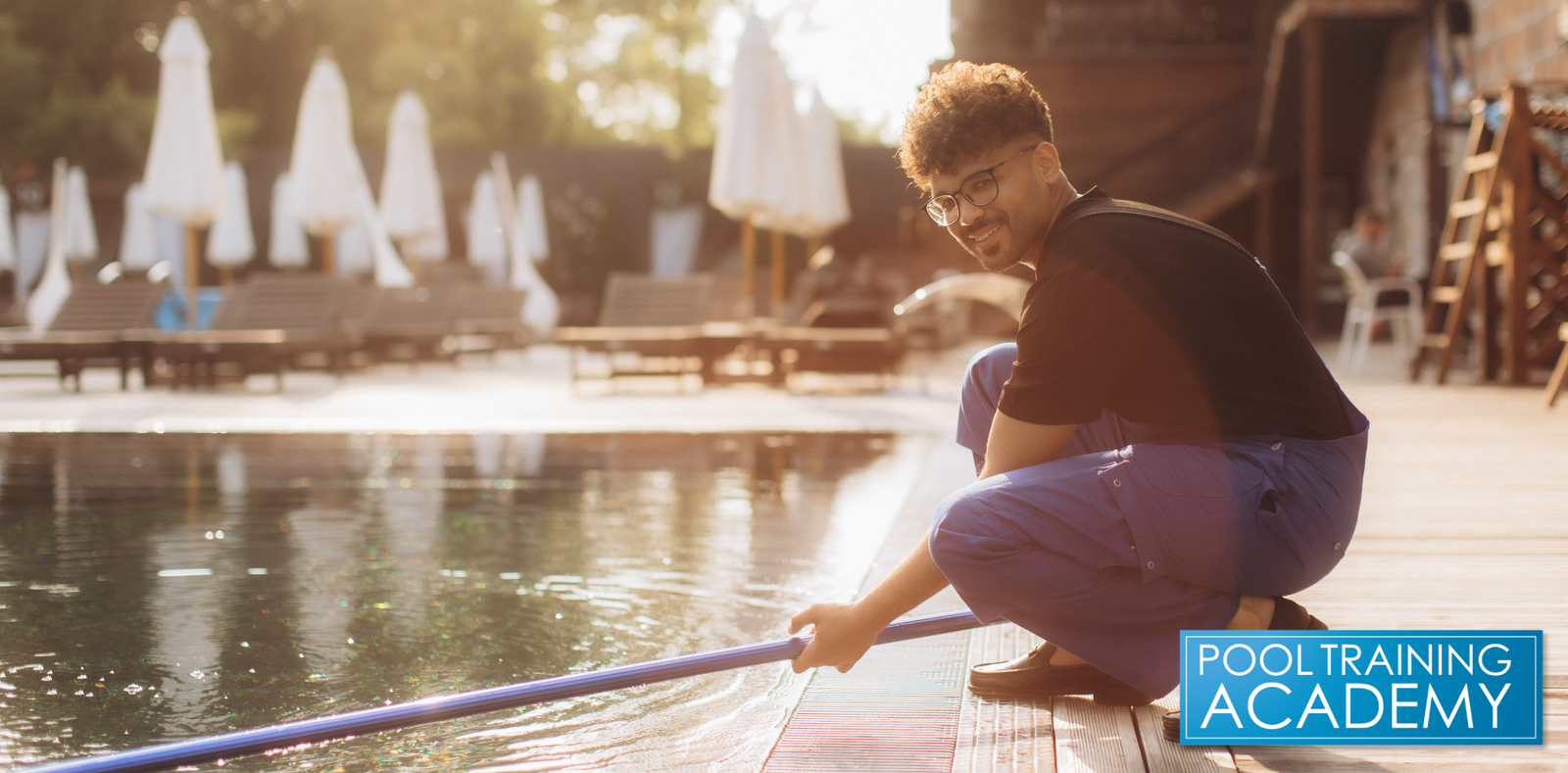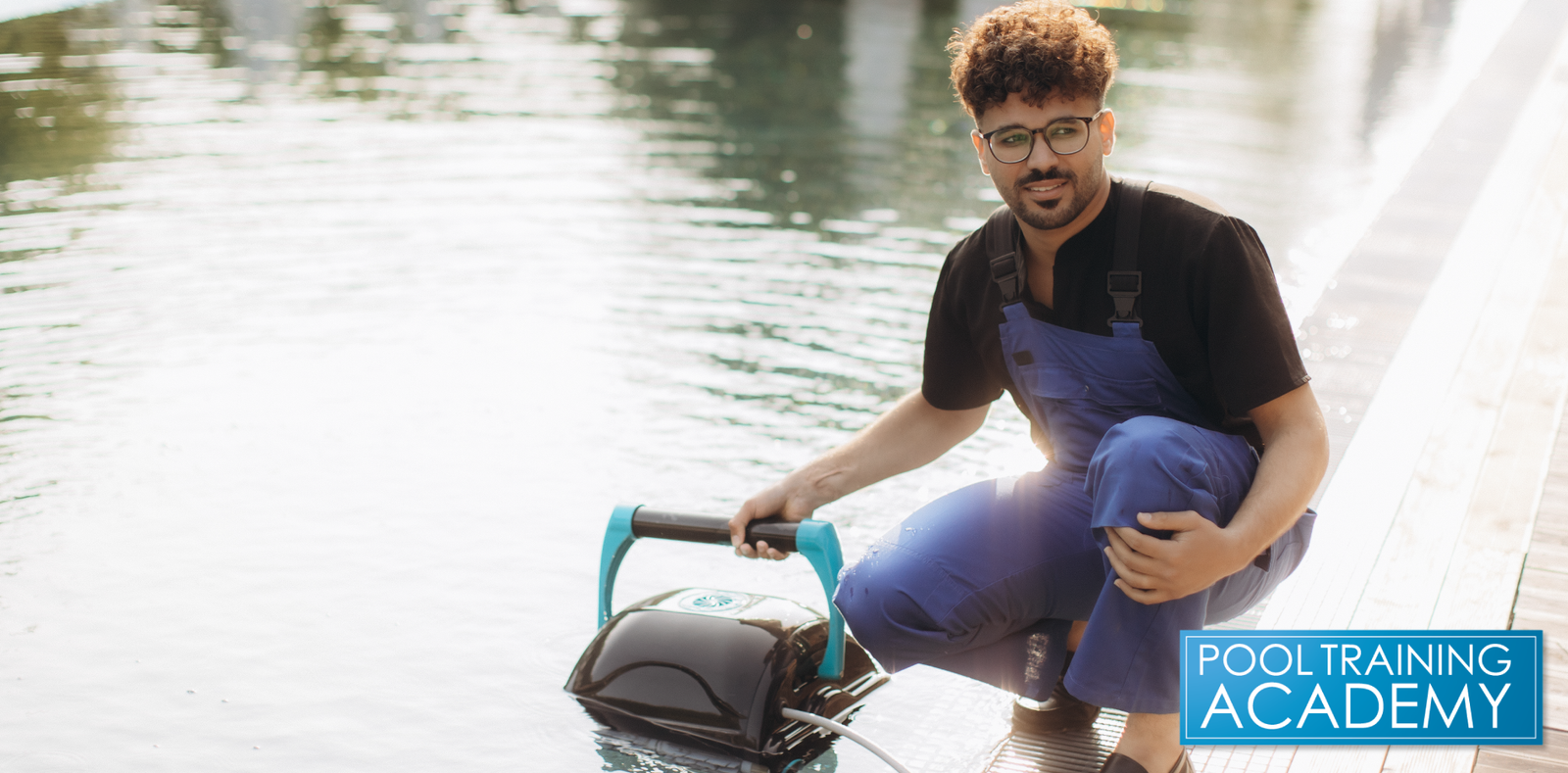
Can You Convert a Pool to a Saltwater Pool?
Can I convert my swimming pool to a saltwater pool?
This is a question I'm often asked in my CPO classes. The simple answer is, yes. Saltwater pools have been part of our industry for quite some time and there are some benefits to installing a salt water system on your commercial swimming pool. There are also some drawbacks. In this article we will go over everything you need to know about saltwater conversions.
Article Highlights
-
Converting your pool to a saltwater pool is not only doable, it's actually relatively easy.
-
A chlorine generator works like a sophisticated light bulb that will produce chlorine from saltwater.
-
A chlorine system should be installed in your pool recirculating system after your heater or in your return line.
-
Chlorine generators are intended to maintain a consistent chlorine value in the pool. They release chlorine slowly and steadily to your pool. They are not designed to respond to higher chlorine demand due to increased bather loads.
-
Some properties will make the claim that “our pool is all natural” - which is kind of true.
-
Many report that salt water is more appealing for most bathers than your traditionally chlorinated pool and that the water “feels softer”. Many bathers report their skin feeling softer and having less issues with their hair.
-
Before you can choose the right saltwater generator system you will need to know your pool volume, flow rate, and average number of bathers.
-
The first piece of equipment you'll need is a chlorine generator.
-
When searching for the right salt generator manufacturer, contact their customer service department and ask questions. Remember, these are the people you'll be working with if issues arise with your unit and you need to be comfortable with their tech support.
-
Salt water levels are normally maintained at 2,500 to 3,000 P.P.M. (parts per million) but some systems may require as high as 8,000 P.P.M. Consult your system manual to know the specs of your particular generator.
-
Your should monitor water-loss on a daily basis to ensure your salt water system is dialed-in properly.
-
There are varying grades of salt available in the marketplace. Salt water generators for swimming pools use pool salt only! Do not use any salt other than pool salt.
-
An in-line anode is a must for saltwater pools.
-
Specialty heat exchangers, like copper-nickel, are not necessarily a necessity if your pool chemistry is maintained correctly.
-
Phosphates can pose a real threat to metal components in saltwater pools, specifically heat exchangers.
-
Increased bather loads require a supplemental chlorine feeder that is in-addition to the salt water system.
Understanding Saltwater Swimming Pool Systems
Before we get into the nuts and bolts let’s look at some comments from my students regarding the pros and cons of saltwater pools.
Pros
-
“My bathers enjoy the feel of saltwater.”
-
Many users also appreciate the gentler water provided by saltwater pools, which is less harsh on skin and eyes.
-
“Our cost of operating a saltwater pool on a day to day basis is less than operating a conventional chlorinated pool.”
-
“I like the ease of operation with a saltwater pool. Put in salt and forget it”.
-
Saltwater pools are also valued for their consistent sanitation, maintaining steady water quality with less manual intervention.
Cons
-
“We had a salt water system and removed it.”
-
“It was too much work. We couldn’t keep our chlorine levels where we needed them.”
-
“ In no time at all we were replacing heat exchangers.”
So, the big question, is a saltwater pool Nirvana or the Apocalypse? Well, read on and we’ll discuss salt systems more in detail and you can be the judge.
Cost of Conversion
Converting your traditional chlorine pool to a saltwater pool is an investment, and understanding the costs involved is key to making an informed decision. The initial cost of a saltwater pool conversion typically ranges from $1,700 to $2,500, depending on your pool’s size and the specific equipment you choose. This price covers the purchase and installation of a salt chlorine generator, which is the heart of your new salt system. Keep in mind, the cost of pool grade salt is additional, but it’s a relatively minor expense compared to the equipment.
Salt chlorine generators are built to last, but like any pool equipment, they require periodic maintenance. The salt cell and control board will need to be replaced every 3 to 7 years, with replacement costs running between $1,200 and $2,000 for both components. While the upfront cost of switching your pool to a saltwater system may seem high, most pool owners find that saltwater pools offer long-term savings on pool maintenance and chemical costs compared to traditional chlorine pools. Investing in a quality salt chlorine generator and salt system will help ensure your saltwater pool runs smoothly for years to come.
Saltwater Pool Health Benefits
One of the biggest draws of saltwater pools is the improved swimming experience they offer. The saltwater system produces softer water that is noticeably gentler on your skin and eyes compared to traditional chlorine pools. Many swimmers report less irritation, fewer issues with burning eyes, and an overall more pleasant feel to the water.
Because saltwater pools rely on a saltwater system to generate chlorine, there’s less need for harsh chemical additives. This means you’re less likely to experience the strong chemical smell or skin dryness often associated with chlorine pools. The water in a saltwater pool is closer to the natural pH of human skin and tears, which can help promote healthier skin and hair. For those with sensitive skin or conditions like eczema and acne, saltwater pools can provide a more comfortable and soothing swimming experience.
Saltwater Pool Environment
Saltwater pools are not just better for swimmers—they’re also a more environmentally friendly choice. The saltwater system uses a natural process to generate chlorine, which means fewer harsh chemicals and byproducts are released into the environment compared to traditional chlorine pools. This reduces the need for manual chlorine addition and lowers the risk of accidental chlorine gas leaks.
Another environmental benefit is that salt chlorine generators are energy efficient, using less power to generate chlorine than traditional chlorine pumps. This can help reduce your pool’s overall energy consumption. Additionally, saltwater pools tend to maintain a more balanced water chemistry, which helps prevent algae growth and other common pool issues, leading to a healthier pool ecosystem overall.
Saltwater Pool Safety
Safety is always a top priority for pool owners, and saltwater pools offer several advantages in this area. Because the saltwater system produces chlorine on demand, there’s less risk of handling or storing hazardous chemicals, and the chance of chlorine gas leaks is greatly reduced compared to traditional chlorine pools.
Saltwater pools also maintain more stable chlorine levels and water chemistry, which helps prevent sudden changes that can cause eye irritation or other health concerns. However, it’s still important to follow proper safety protocols: regularly test and balance your pool water, and ensure your salt chlorine generator is installed and maintained according to the manufacturer’s instructions. With the right care, a saltwater pool can provide a safe and enjoyable swimming environment for everyone.
How does a saltwater pool work?
A chlorine generator is installed in your pool recirculating system. It works like a sophisticated light bulb that will produce chlorine from saltwater. Through the process of salt chlorination, the generator converts dissolved salt into pure chlorine using electrical power, providing a self-regenerating and effective method for pool sanitation. These generators must be installed after the pool heater or in the return line to the pool.
Chlorine generators are intended to maintain a consistent chlorine value in the pool. Their chlorine production is steady and reliable, ensuring consistent sanitation by releasing chlorine slowly and steadily to your pool.
It’s important to note that they do not respond to higher chlorine demand created by high bather loads quickly. These generators are designed to create a base line chlorine residual in semi-commercial pools.
I’ll cover the issue of high bather demand later in this article.
Is a saltwater system the right fit for your pool?
The answer to this question boils down to your motivation for a saltwater pool. Is your motive to save money? Your daily operating costs, in most cases, will be less than a conventional chlorinated pool. Many pool owners consider salt pool conversions for the potential benefits, weighing the pros and cons before making a decision. There are, however, some upfront costs to consider - equipment and installation. Saltwater conversion is a straightforward process that appeals to those seeking easier maintenance. We’ll cover those details later.
Salt Water Pools Are More Appealing Than Chlorinated Pools
Many report that salt water is more appealing for most bathers than your traditionally chlorinated pool. They will often tell you that the water “feels softer” and most bathers report their skin feeling softer and having less issues with their hair. Salt pools are often preferred for their comfort and ease of maintenance.
Some properties will make the claim that “our pool is all natural”‘ - which is kind of true. Sure, it’s using salt (a natural substance) to create chlorine, but it is still putting chlorine into the pool, so it’s not necessarily “more natural”. It’s just getting there in a different way. My thought on making claims like this is to be careful. I wouldn’t oversell this point. For context, the salt concentration in a salt pool is much lower than in the ocean and is even less salty than a human tear, making salt pools gentle on eyes and skin.
I would highly recommend you do your research about your specific pool to decide if installing a saltwater generator makes sense for you.
Assuming you are still interested in putting when, let’s talk about the process of choosing the right system and installation.
How Do I Convert My Swimming Pool To A Salt Water System
So, you’re still interested in installing a salt system! Great! Let’s get started.
First order of business, your pool’s volume. This is a must-know factor in choosing the correct size generator. When selecting a salt chlorine generator, make sure it is rated for your pool size or, ideally, 1.5 to 2 times larger than your actual pool size for optimal performance.
Next, is flow rate of your pool. The water must circulate at a specific rate in order to maintain proper pool water quality (we will be covering this more in a separate article). Most systems are designed for straightforward installation and are compatible with standard pool setups.
Now, calculate the average number of bathers using your pool daily or weekly.
With these three values, you can now start your research. Converting your pool to saltwater involves choosing the right saltwater chlorinator for your pool's size and following the recommended installation steps.
Selecting The Right Salt Water Generator Equipment
The first piece of equipment you’ll need is a salt chlorinator, which is the device responsible for converting salt into chlorine for pool sanitation.
When selecting a saltwater generator, it's important to consider the chlorine production capacity of the salt chlorinator to ensure it can meet your pool's needs, especially during peak swim season.
How much salt is required for a generator to perform for your pool?
There are two schools of thought here. There are generator that require as little as 2500 - 3500 parts per million (PPM). These are the models that would be best suited for the semi-commercial pools.
After determining the required salt level for your generator, you should add pool grade sodium chloride to achieve the desired salinity. Adding pool grade salt is a crucial step before activating the salt chlorine generator.
Lower salt levels make it easier to manage the TotalDissolved Solids (TDS) levels. TDS is a subject we’ll cover in greater detail later in this article.
There are some manufacturers that require 4,000 - 8,000 P.P.M. salt for their generators to preform. Most of these companies create higher chlorine values that are more suited for commercial pools(100,000 gallon plus).
Also keep in mind, higher salt levels add to higher water balance issues.
Some companies that have a good track record in semi-commercial generators are Pentair, Hayward, and Zodiac.
But keep looking, there are several new comers to the market that might work for you as well.
When searching for the right salt generator, I suggest that after your initial review you narrow down your selection to two or three companies. Contact their customer service department and ask questions. Remember, these are the people you’ll be working with if issues arise with your unit. You need to be comfortable with there tech support.
Some questions to ask the salt generator manufacturer:
-
Who in your local area has experience with their equipment?
-
What is the life expectancy of their unit and what would be required after this generator has reached its life cycle?
-
Do I need to replace the complete unit or components?
Now that you have found the right system for your swimming pool and it has been professionally installed, it's time to use it!
Using Your Salt Water System
To start your salt water system you’ll need to add salt. Remember our goal is 2,500 - 3,500 P.P.M. (Example: for a 30,000 gallon pool you will need approximately 250 pounds of salt.) Saltwater conversion does not require draining the pool and is a straightforward process—simply add salt directly to the water and let the salt chlorine generator do the work.
There are some generators that have a salt monitor built into them. These will typically read in P.P.M. However, with other generators you will need to test for salt levels separately. There are test kits available to test for salt levels. Saltwater systems simplify ongoing pool maintenance by automatically generating chlorine, which helps maintain water quality and reduces the need for manual chlorine addition.
Saltwater Pool Winterization
When it comes time to close your saltwater pool for the winter, there are a few extra steps to keep in mind compared to traditional chlorine pools. First, you’ll want to lower the salt level in your pool water and follow the manufacturer’s guidelines for winterizing your salt chlorine generator. Protecting the generator and other pool equipment from freezing temperatures is essential to avoid costly repairs.
Covering your saltwater pool during the off-season helps keep out debris and contamination, making spring opening much easier. Before closing, be sure to test and balance your pool water to ensure everything is in good shape for the next swim season. By following these winterization steps, pool owners can help extend the life of their saltwater system and enjoy a smooth, trouble-free start when it’s time to swim again.
Saltwater Pool Opening
Opening your saltwater pool in the spring is a bit different from traditional chlorine pools, but with the right steps, you’ll be ready for a great swim season. Start by removing the pool cover and thoroughly cleaning the pool and equipment to get rid of any debris or buildup from the winter months. Next, test and balance your pool water, paying special attention to salt levels and overall water chemistry.
Check your salt chlorine generator to make sure it’s functioning properly, and follow the manufacturer’s instructions for startup. It’s also a good idea to shock the pool to ensure the water is safe and clear before swimming. By taking these steps, saltwater pool owners can look forward to a safe, healthy, and enjoyable swimming experience all season long. Happy swimming!
Adding Salt To My Swimming Pool
To add salt to your pool, pour it directly into the shallow end of the pool and brush it toward the deep end.
Pool salt is soft so it will mix into the pool quickly. East as that, you're creating chlorine!
Saltwater will be lost from the pool, so it's important that salt levels are maintained at normal levels.
What Type Of Salt Should I Use In My Swimming Pool?
There are varying grades of salt available in the marketplace. Salt water generators for swimming pools use pool salt only! Do not use any salt other than pool salt.
The price can vary on pool salt, so shop around.
Important Things To Know About How Salt Affects Your Swimming Pool
An in-line anode is a must for saltwater pools.
This is a small PVC housing that contains a zinc rod. Zinc is a soft metal. The high solids created by the salt (TDS) will attack this zinc core before it will have any negative effect on your hand rails, ladders etc. It's called a sacrificial metal. In-line anodes are easy to install! For the anode to give its maximum performance, it must be connected to your bonding loop - this is the #8 bare-copper wire that runs through your pump room. It attaches to your pump, heater, and any other metal equipment. By attaching the anode lead to this bonding wire it will give even greater protection.
You can find more on this subject in separate article called grounding and bonding.
I would also suggest an anode model with a clear lid so you can watch as the Zinc core inside the unit erodes, so you can replace it in a timely manner. PoolTool is one of many that make anodes for pools
Specialty Heat Exchangers - Copper-Nickel
There is some controversy as to the need of a copper-nickel(also known as cupronickel) heat exchanger for your pool heater with a salt water system.
It has been my experience, if the system is properly maintained, this upgraded exchanger is not generally necessary.
Phosphates and Salt Water Pools
Phosphates are a byproduct associated with saltwater pools. Phosphates can pose a real threat to metal components, specifically heat exchangers.
The simple way to control Phosphates in your pool water is to use an enzyme developed specifically for this purpose. A company I've been pleased with is Natural Chemistry
There are test kits, or strips, made specifically to monitor your Phosphate levels. These levels are maintained in parts per billion (PPB)
Increasing Chlorine In An Emergency Or As Bather Load Increases
As mentioned early in this article, a chlorine generator is designed to maintain a constant chlorine feed. So, to meet the higher chlorine demand created by increased bather loads a supplemental chlorine feeder is required.
This could be an erosion feeder designed for chlorine tablets, or preferably, a liquid chlorine feeder.
One of the main advantages of a saltwater system is that it reduces or eliminates the need for manually adding chlorine, since the salt chlorine generator automatically produces chlorine from salt. This makes pool maintenance easier and can lead to cost savings over time.
Liquid chlorine is salt-based and thereby adds salt to the pool for you generator.
Understanding How ORP and PH Affect Your Salt Water Swimming Pool
When adding a supplemental chlorine feeder I always recommend installing an ORP (Oxidation Reduction Potential) and pH controller to your pool system.
These controllers will automatically feed chlorine to offset the higher demand created by increased bather loads.
In addition, it will maintain the pH of your pool water, as salt constantly increases the pH of pool water. It is also important to regularly test and maintain proper cyanuric acid (stabilizer) levels in your pool water, as cyanuric acid helps protect chlorine from UV degradation and ensures effective sanitation.
ORP/pH controllers operate by reading the milli-volt levels in pool water, giving you more precise control of your pool.
In fact, an O.R.P. /p.H. controller can maintain water quality equal-to and above drinking water standards! Companies such as Chemtrol and Rola-Chem are two good controller companies to consider.
Regular cleaning of the salt cell with a diluted acid solution, such as muriatic acid, helps remove mineral buildup and scale, maintaining optimal system performance.
Hiring A Pool Management Company To Help You With Your Salt Water Pool
There are pool management companies that can install, control, and manage your saltwater pool for a nominal monthly fee. A nationally recognized provider is Eco Lab. However, you may find a local provider that can perform this service also.
Conclusion
I hope that this article has helped you along in your salt-water journey! If you have any questions or are interested in learning more about what we offer at the Pool Training Academy, send us an email to: info@pooltrainingacademy.com. We're always happy to help!




Nhiem Fletcher
July 25, 2023
The best and most honest article I’ve read on salt water generators. I used one the first 5 years we owned a pool. I constantly had to shock the pool, i constantly battled with high Ph, and phosphates. The past two years I’ve used the Clorox blue tabs and my pool has been low maintenance ever since!